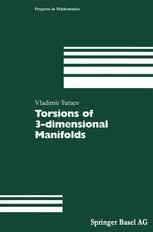

Most ebook files are in PDF format, so you can easily read them using various software such as Foxit Reader or directly on the Google Chrome browser.
Some ebook files are released by publishers in other formats such as .awz, .mobi, .epub, .fb2, etc. You may need to install specific software to read these formats on mobile/PC, such as Calibre.
Please read the tutorial at this link: https://ebookbell.com/faq
We offer FREE conversion to the popular formats you request; however, this may take some time. Therefore, right after payment, please email us, and we will try to provide the service as quickly as possible.
For some exceptional file formats or broken links (if any), please refrain from opening any disputes. Instead, email us first, and we will try to assist within a maximum of 6 hours.
EbookBell Team

4.0
96 reviewsThree-dimensional topology includes two vast domains: the study of geometric structures on 3-manifolds and the study of topological invariants of 3-manifolds, knots, etc. This book belongs to the second domain. We shall study an invariant called the maximal abelian torsion and denoted T. It is defined for a compact smooth (or piecewise-linear) manifold of any dimension and, more generally, for an arbitrary finite CW-complex X. The torsion T(X) is an element of a certain extension of the group ring Z[Hl(X)]. The torsion T can be naturally considered in the framework of simple homotopy theory. In particular, it is invariant under simple homotopy equivalences and can distinguish homotopy equivalent but non homeomorphic CW-spaces and manifolds, for instance, lens spaces. The torsion T can be used also to distinguish orientations and so-called Euler structures. Our interest in the torsion T is due to a particular role which it plays in three-dimensional topology. First of all, it is intimately related to a number of fundamental topological invariants of 3-manifolds. The torsion T(M) of a closed oriented 3-manifold M dominates (determines) the first elementary ideal of 7fl (M) and the Alexander polynomial of 7fl (M). The torsion T(M) is closely related to the cohomology rings of M with coefficients in Z and ZjrZ (r ;::: 2). It is also related to the linking form on Tors Hi (M), to the Massey products in the cohomology of M, and to the Thurston norm on H2(M).